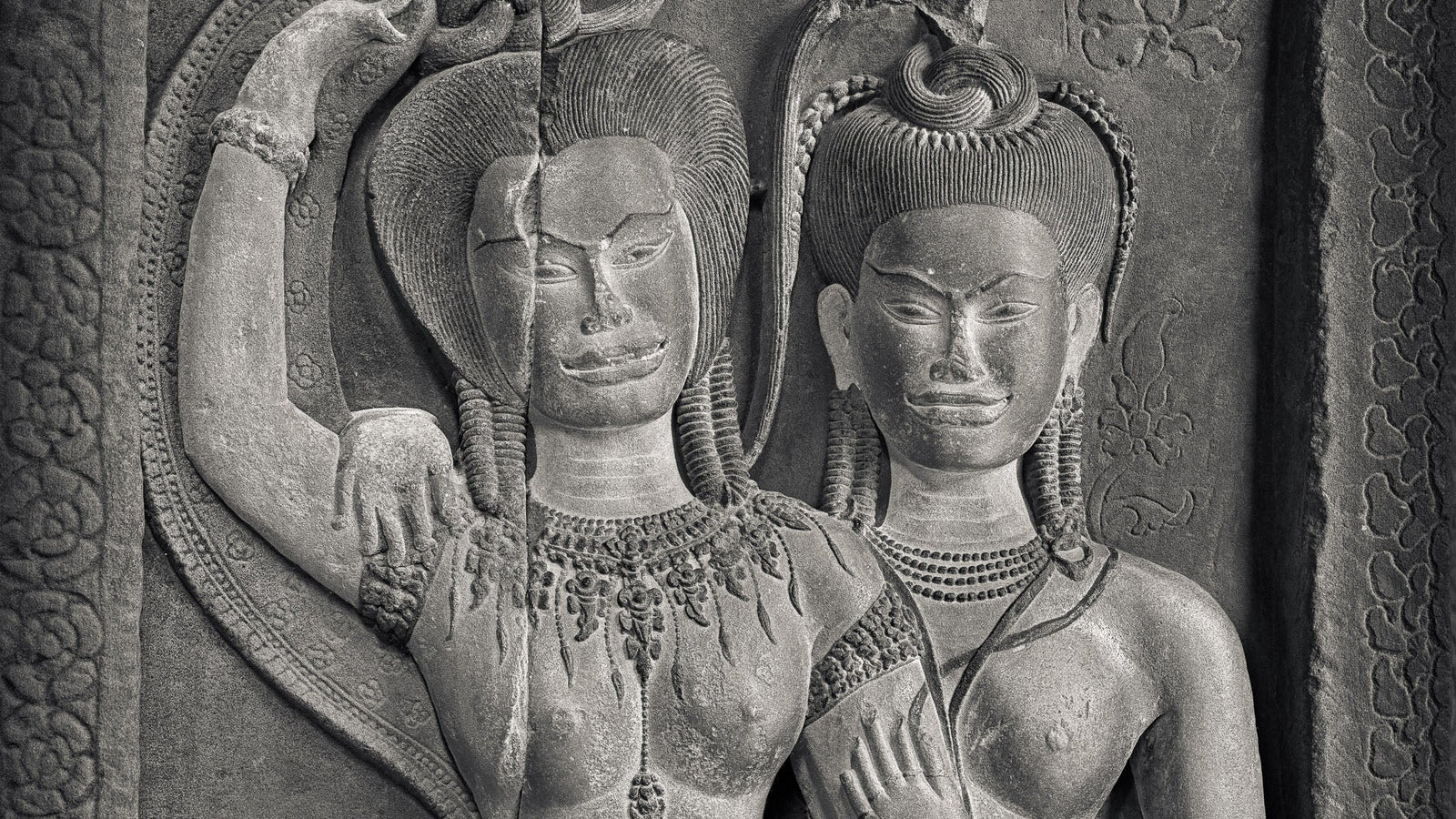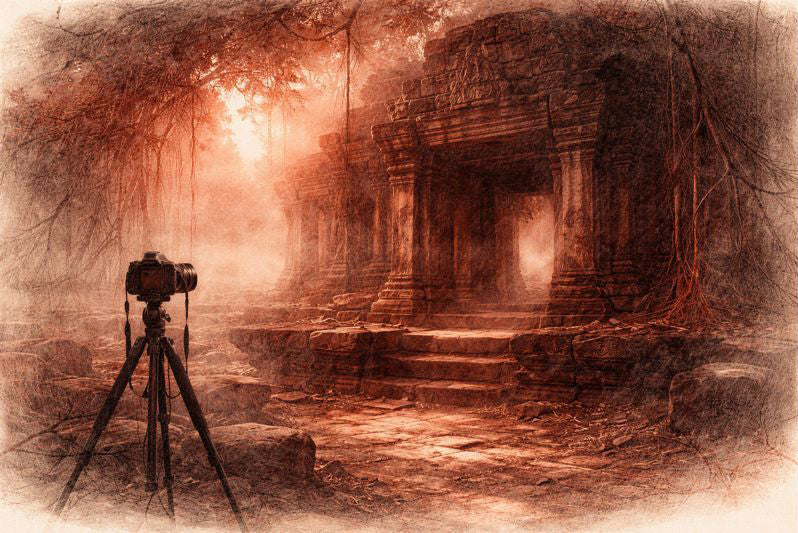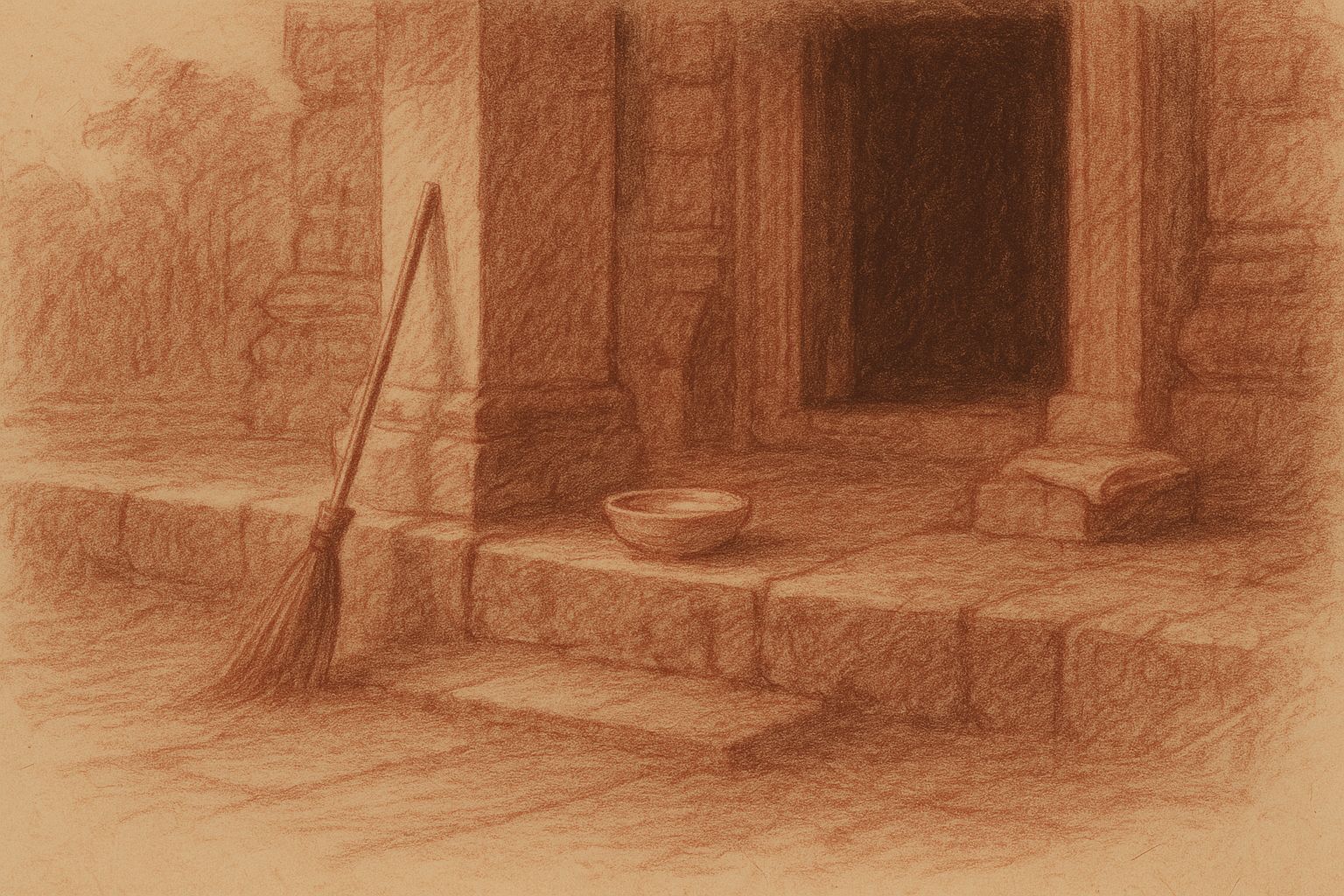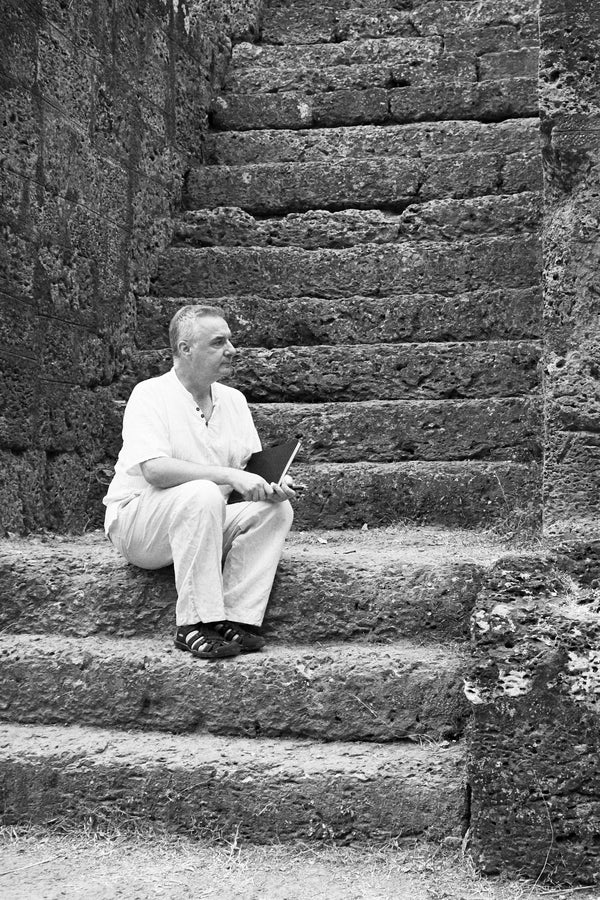Complimentary worldwide shipping on orders over $400 · No import tariffs for most countries
Complimentary worldwide shipping on orders over $400 · No import tariffs for most countries

The Gaze
In this article, we’ll consider the psychological concept of The Gaze, and how it applies to the depiction of the female form in art, and specifically to that most iconic of Khmer iconography, the apsara.
In critical theory, philosophy, sociology, and psychoanalysis, the gaze (French: le regard), in the figurative sense, is an individual's (or a group's) awareness and perception of other individuals, other groups, or oneself.
The social application of the gaze that is under consideration here is the concept of the “male gaze”, coined by the English art critic John Berger, as part of his analysis of the treatment of the nude in European painting. Berger described the difference between how men and women view and are viewed in art and in society. He asserts that men are placed into the role as the watcher and women are to be looked at.
Laura Mulvey, a British film critic and feminist, similarly critiqued traditional media representations of the female character in cinema. Like Berger, Mulvey discusses the association between activity and passivity to gender. Essentially, Mulvey argues that masculinity is related to the active, whereas femininity is related to the passive.
Thus, in the Western psyche, women in art are the object of the gaze and man is the bearer of the gaze, with all the implications of power over what is gazed upon, such as the sexual objectification of women. The creators of this art are predominantly male, white, heterosexual, and Western, and those that do not fall into this category are influenced by its supremacy. Through these influences female characteristics such as youth, beauty, sexuality, or the possession of a man are desirable while the prevalence of stereotypes consisting of submissive and sensual women are projected. Modern cultures throughout the world have been influenced by these ideas.
The Sacred Women of Angkor
From an artistic perspective, apsaras are the main device used to create a magical ambience in the temples, which may otherwise seem rather severe. But they are far more than mere decoration.
While present-day Cambodia is heavily influenced by Western culture, the sacredness attached to the women depicted in Khmer iconography overturns the present Western view described by the gaze.
The exterior walls of Angkor Wat Temple’s galleries, gopuras, pavilions and towers are decorated with over 2,000 images of apsaras (or devatas), some standing alone or in small groups, others dancing, and there are thousands more in the many other temples of Angkor. Their representation was almost certainly influenced by the knowledge of the Lakshmi Tantra (compiled between the 9th and 12th centuries CE) that not only glorifies Lakshmi as the shakti of Vishnu-Narayana, but also women in general as beings created in the cherished form of Lakshmi, and it advocates their worship. In addition, it alludes to the particular path to liberation and power of the left-handed Tantras that requires a female partner.
The huge number of apsara reliefs is likely due to two reasons:
First and foremost, these celestial women were believed to live in the skies attending to the needs of the gods and therefore their presence on the walls of the temple has the function of transforming it into a celestial palace, the house of the gods, and made sure that the gods were happy with their earthly abode.
The second reason lies in the inborn auspiciousness of women, which is then transferred to the monument upon which they are portrayed. The classic Indian text codifying artistic representations, Shilpa Shastra, written in the the 10th century CE, asserts the potency of women's fertility and equates it with growth, abundance and prosperity. A sacred or temporal monument could only, therefore, become auspicious if adorned with representations of women.
Apsaras were therefore sculpted (by male artists) to enhance the sacredness and auspiciousness of the monument and not simply for the viewing pleasure of men, even if the female forms express great sensuality.
The Shilpa Prakasa provides guidelines for temple architects and sculptors, which were followed in Angkor. It unequivocally states that figures of women are indispensable to temple wall decoration, and lists 16 types best employed, instructing the sculptor on how exactly these figures should be carved within the confines of an upright rectangle. It further dictates their poses: they could be relaxed and indolent, looking into a mirror, smelling a lotus, adorning themselves with flowers, or garlanding themselves with twigs, adjusting their anklets, or holding their flywhisks.
The abundant reliefs of rishis strengthen the identification of the temple with their abode, Mount Meru. All these celestial and ascetic images converge to elevate the temple from an earthly structure into a heavenly one.
So, the next time you visit the temples of Angkor and see all of the beautiful ladies adorning the walls, you may wish to pause and consider how your feelings are influenced by the gaze, and instead try to see these women as they were seen by their creators; as sacred figures worthy of worship, designed to help transport the temple from the temporal to a celestial plane. Pause to ponder this and let these ladies transport you to the home of the gods.
If you enjoyed this article, and you would like to continue to share in my adventures, please sign up for my newsletter below. Since I no longer post on social media, this is the best way to stay up-to-date with my work.
Also in Library

Before the Shutter Falls
3 min read
Before the shutter falls, fear sharpens and doubt measures the cost of waiting. In the quiet hours before dawn, the act of not-yet-beginning becomes a discipline of attention. This essay reflects on patience, restraint, and the quiet mercy that arrives when outcome loosens its hold.

Those Who Keep the Way Open — On the Quiet Guardians of Angkor’s Thresholds
3 min read
Quiet gestures shape the way into Angkor — a swept stone, a refilled bowl, a hand steadying a guardian lion. This essay reflects on the unseen custodians whose daily care keeps the thresholds open, revealing how sacredness endures not through stone alone, but through those who tend its meaning.

Multiplicity and Mercy — The Face Towers of Jayavarman VII
5 min read
A new vision of kingship rises at the Bayon: serene faces turned to every horizon, shaping a world where authority is expressed as care. Moving through the terraces, one enters a field of steady, compassionate presence — a landscape where stone, light, and time teach through quiet attention.
Join My Studio Journal
Receive occasional letters from my studio in Siem Reap—offering a glimpse into my creative process, early access to new fine art prints, field notes from the temples of Angkor, exhibition announcements, and reflections on beauty, impermanence, and the spirit of place.
No noise. No clutter. Just quiet inspiration, delivered gently.
Subscribe and stay connected to the unfolding story.

Join My Studio Journal
Receive occasional letters from my studio in Siem Reap—offering a glimpse into my creative process, early access to new fine art prints, field notes from the temples of Angkor, exhibition announcements, and reflections on beauty, impermanence, and the spirit of place.
No noise. No clutter. Just quiet inspiration, delivered gently.
Subscribe and stay connected to the unfolding story.

